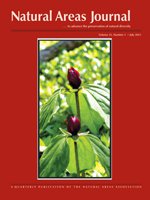A resilient coastal wetland is naturally dynamic and responds to disturbances by maintaining the regimes defining structures and functions. Methods to monitor resilience have been difficult to develop, yet are essential to either prevent or actively navigate a regime shift. As others have reported, ecosystem behavior becomes more variable when resilience decreases and feedbacks begin to weaken. To advance the practice of conservation within protected areas, a resilience-based approach to monitoring was explored within Fathom Five National Marine Park, Canada. By means of a multivariate distance-based control chart, the variability of fish assemblages in eight coastal wetlands over an eight-year period (2005–2012) was monitored. The control chart identified occasions when variance in three of the park's wetlands deviated more than expected (i.e., acted “out of control”). To explain the exceedances. an ordination of fish assemblages was completed using principal components analysis (PCA) and redundancy analysis (RDA). Colonization by the invasive round goby (Neogobius melanostomus) and the prolonged period of low lake levels and stranding were discussed as possible explanations for the exceedances. In conclusion, the control chart and ordination methods provided valuable insight and understanding of wetland dynamics and were recommended as part of a long-term resilience-based approach to monitoring.
How to translate text using browser tools
14 July 2015
Monitoring for Resilience within the Coastal Wetland Fish Assemblages of Fathom Five National Marine Park, Lake Huron, Canada
Scott R. Parker,
Cavan Harpur,
Stephen D. Murphy
ACCESS THE FULL ARTICLE

Natural Areas Journal
Vol. 35 • No. 3
July 2015
Vol. 35 • No. 3
July 2015
coastal wetland
control chart
Lake Huron
monitoring
protected area
resilience




